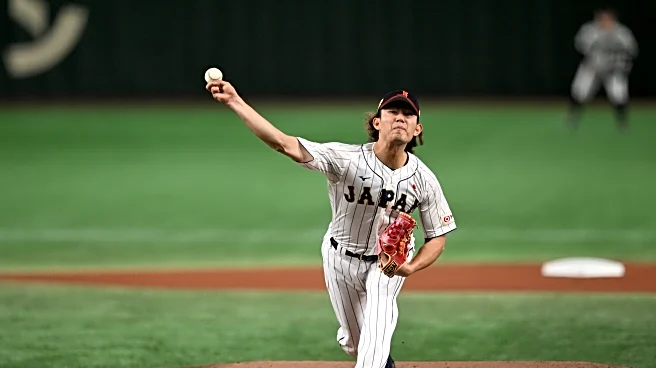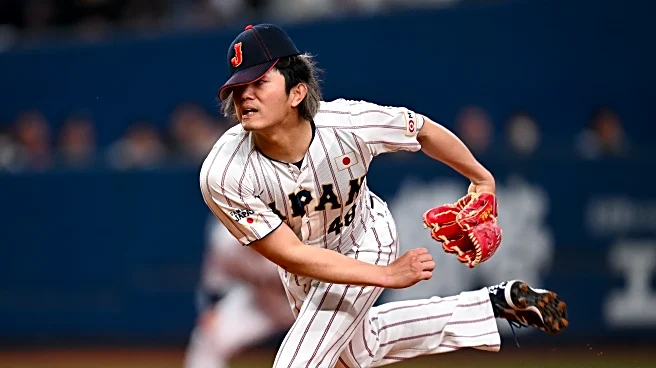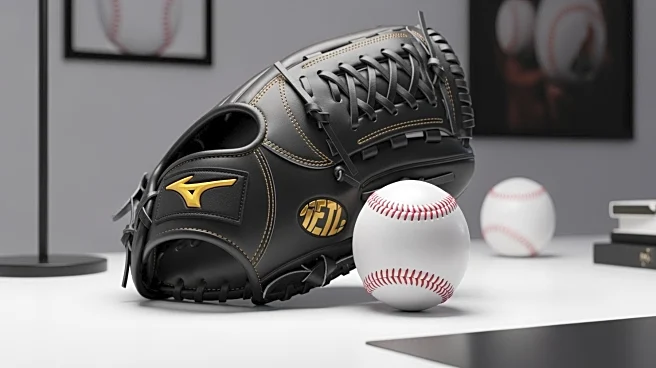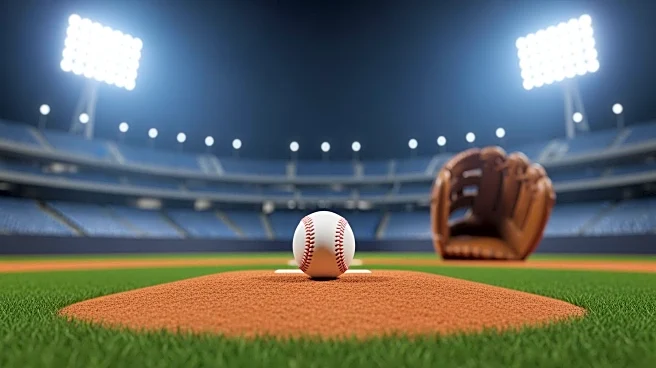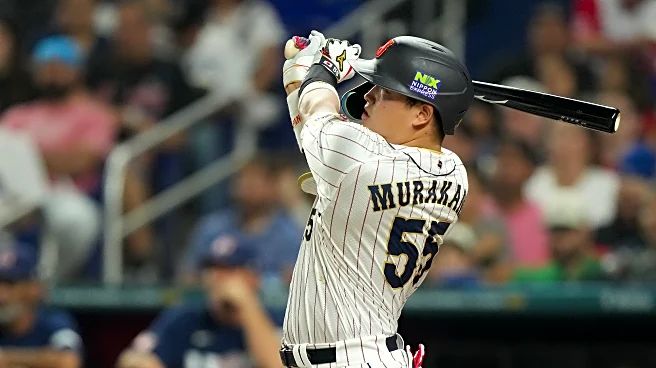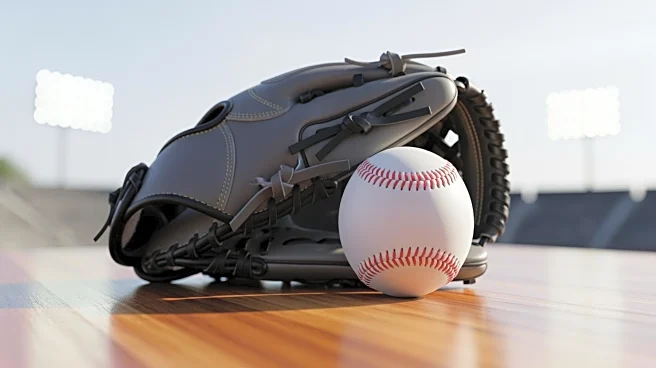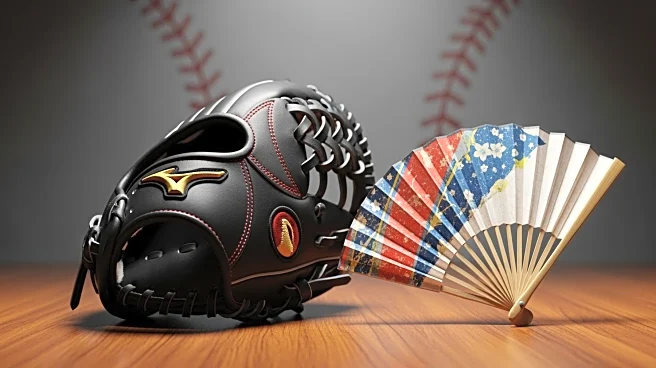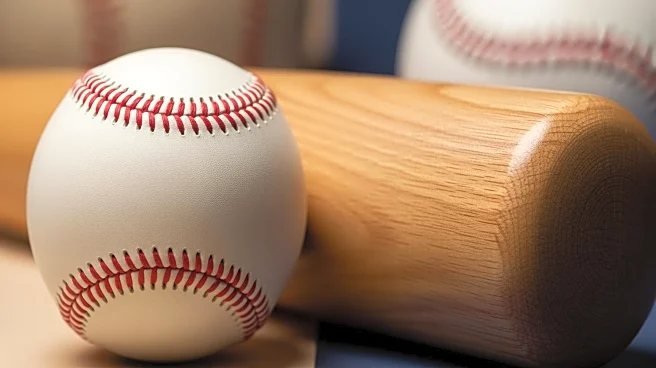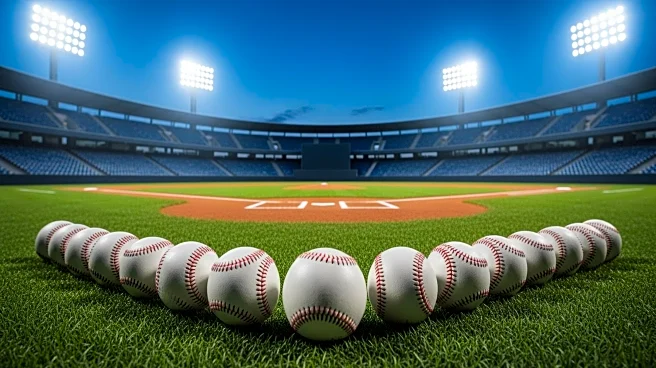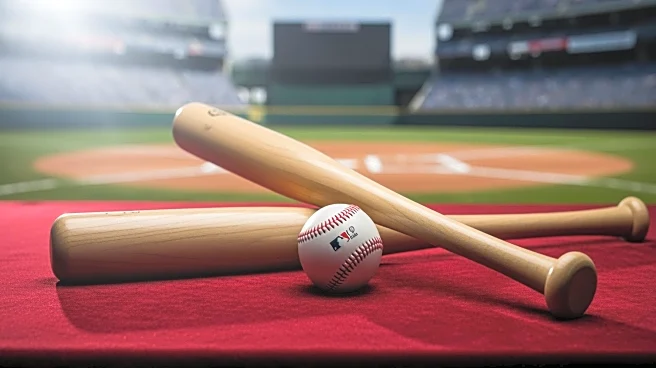Tatsuya Imai was born in Kanuma, a city in Japan’s Tochigi Prefecture, on May 9, 1998. He attended Sakushin Gakuin High School in Utsunomiya, the capital of Tochigi Prefecture, and in his third and final
year there, he ascended to the summit of the Japanese high school baseball world, helping lead the team to the Summer Koshien championship, defeating Hokkai High School 7-1. Imai pitched in all five games of the tournament and threw 41 innings, allowing 5 runs while striking out 44 batters. The victory meant even more to the right-hander, as his grandfather died a few months prior to the summer competition, and when he took the mound, he wore a necklace pendant that contained a small portion of his grandfather’s cremated ashes.
During Koshien, his fastball topped out at 94.4 MPH, impressing a number of evaluators who were scouting the tournament. Eligible to be selected in the 2016 NPB Draft, the Seibu Lions selected the right-hander with their first pick, and because the pick went uncontested by other teams, Imai became a Lion.
Imai was expected to make the Lions’ starting rotation out of spring training, but he left camp early due to inflammation in his right shoulder. He resumed baseball activities in mid-April, assigned to the Lions’ ni-gun minor league team, but the shoulder inflammation and discomfort lingered throughout the year, causing him to have to cease baseball activities two additional times and limiting him to just 15.2 innings for the entire year in the NPB minor league Eastern League.
In 2018, the 19-year-old began the year suspended, caught smoking in public despite being below the legal age to purchase and possess tobacco in Japan. When the team suspension was lifted in May, he was placed on the Seibu Lions roster, and June 13, made his first professional start, throwing six innings against the Yakult Swallows, allowing one run on 5 hits and 2 walks while striking out 6. Imai was moved up and down between the Lions roster and their minor league team a handful of times throughout the year, but he ended up appearing in 15 games, making 14 starts and throwing 78.2 innings in total with a 4.81 ERA, 74 hits allowed, 35 walks, and 65 strikeouts. The right-hander had a similar year in 2019, appearing in 23 games and making 22 starts, and throwing 135.1 innings with a 4.32 ERA, 127 hits allowed, 72 walks, and 105 strikeouts.
In 2020, despite the COVID-19 pandemic raging around the world, Japan was able to play a mostly full 120-game schedule owing to the nation’s extreme care managing the virus. Cognizant of his control problems- a problem that had plagued him since his high school days- Imai used the semi-condensed season to experiment, tweaking his mechanics to more closely resemble those used by Yu Darvish. Unfortunately for the 23-year-old, the experiment failed, as he posted a 6.13 ERA in 61.2 innings, allowing 72 hits, walking 52, and striking out 44. Following the end of the season, he reached out to Darvish directly to ask the Cy Young Award runner-up for assistance.
In some regards, Imai’s 2021 season was a major improvement; in others, it was another sub-satisfactory season. The right-hander appeared in 25 games and posted a 3.30 ERA in 158.1 innings, allowing 123 hits, walking 99, and striking out 137. On the positive side, Imai led the team in ERA, but on the negative side, he walked an NPB-worst 99 batters.
Early in the 2022 season, Imai sprained his left ankle, and as a result, he missed a considerable amount of time. He returned to the mound at the end of June roughly 5 pounds heavier from upper-body weight training, and the added muscle mass had a profound impact on his success, as did the deadened ball that many players, coaches, and media personalities believe the league surreptitiously began utilizing around that period of time. The 24-year-old appeared in 15 total games and posted a 2.41 ERA in 59.2 innings, allowing 37 hits, walking 34, and striking out 61. Coincidentally or not, he also began growing out his now-trademark long hair upon his return. His success continued into 2023, as the right-hander appeared in 19 games and posted a 2.30 ERA in 133.0 innings, allowing 87 hits, walking 61, and striking out 130.
In 2024, Imai served as Seibu’s opening day starter for the first time in his career due to an injury to fellow right-hander and fellow long-hair enthusiast, Mitsunari “Kona” Takahashi. He continued improving, posting career-bests in multiple pitching categories. Appearing in 25 games, Imai posted a 2.34 ERA in 173.1 innings, allowing 132 hits, walking 70, and striking out 187, his strikeouts the most in all of Nippon Professional Baseball. His 2025 was much of the same, as he posted a 1.92 ERA in 163.2 innings, allowing 101 hits, walking 45, and striking out 178, this time second-most in Japan behind Fighters ace Hiromi Itoh.
Following the conclusion of the season, Imai asked Seibu management to post him, a request that was granted. In an interview with Nikkan Sports upon being posted, the 27-year-old stated that he had not always desired to come to the United States to play baseball, but he felt that baseball in Japan was no longer competitive or fun, and that he wanted to play somewhere where he could be challenged. If he successfully comes to a U.S. team, he will be leaving Japan a three-time NPB All-Star (2021, 2024, 2025) with a cumulative 3.15 ERA in 963.2 innings with 753 total hits allowed, 468 total walks issued, and 907 total strikeouts notched.
The right-hander stands 5’11” and is listed at 175 pounds. Imai has shown no issues throwing innings, logging at least 150 innings in four of his last five seasons and regularly running up high pitch counts, but his slight stature may still potentially be a red flag. As has been the case with many pitchers coming to the MLB from Japan, he will have to adapt to pitching on a more demanding rest schedule, toeing the mound once every five days as opposed to simply once a week.
He throws from a low three-quarters, almost sidearm, arm slot, dropping and driving off the mound, lowering his release point further. Control has long been an issue for the right-hander. While he has improved upon it over the last few years, Imai was perennially among the league leaders in walks in the first half of his career. Since 2021, the right-hander has nearly cut his walk rate in half, going from a 14.5% rate to a 7.0% rate this past season. During his posting press conference, he made mention of this issue that he has made great strides on, stating that he believed that teams would often intentionally not take swings against any of his pitches, simply using at-bats early on in games to run up his pitch count and eventually force him to leave games.
Imai is arguably a two-pitch pitcher, primarily relying on his fastball-slider combination. He mixes in his change-up often enough for batters to be forced to watch for it, and less frequently throws in a cutter, curveball, splitter, and sinker, but he is mainly a fastball-slider pitcher. Since 2021, he has thrown his fastball at a 45.6% rate, his slider at a 29.4% rate, his change-up at a 13% rate, with his other pitches making up the remaining 12%. In his last two seasons, he has used his fastball at a 47% rate, his slider at a 36% rate, his changeup at an 8.4% rate, with his other pitches making up the remaining 10%.
The right-hander’s four-seam fastball averaged 94.9 MPH last season and has averaged 94 MPH since 2021, putting him in the 90th percentile among NPB pitchers. In general, he works a little lower than that when the bases are empty and can dial it up to 99 MPH when runners are on and he needs swings-and-misses and strikeouts. His low release gives his fastball a very flat vertical approach angle, and this deception is very pivotal to the pitch’s success, as his four-seam fastball shape is actually fairly suboptimal, with an average of 2180 RPM, below-average for a four-seam fastball. Imai can throw the pitch for strikes, generally peppering the middle and lower thirds of the strike zone and not throwing much to the top of the zone. By itself, the pitch does not fool many batters, with below-average swing-and-miss rates both inside and outside of the zone. Since 2021, the pitch has averaged +4.7 RAA.
His slider has unique gyroscopic motion and might better be classified as a screwball, as he pronates such that the pitch has slight arm-side movement, rather than the glove-side movement that a right-handed slider normally would have. The pitch has averaged 85 MPH and features roughly two inches of vertical drop and roughly two inches of arm-side movement. The pitch is Imai’s main strikeout offering and he generally throws the pitch outside of the zone to get batters to chase. As such, the right-hander has well above-average swing-and-miss rates outside the zone, and roughly an average swing-and-miss rate with the pitch inside of it. Since 2021, the pitch has averaged +7.2 RAA
His changeup has averaged 86.5 MPH since 2021. While Imai throws the pitch much less than his fastball or slider, his changeup has had strong results, with its above-average vertical and horizontal movement giving it slightly above-average swing-and-miss rates, especially in the zone. Since 2021, the pitch has averaged +1.6 RAA.
Key to much of Imai’s success has been his ability to limit home runs. In 163.2 innings thrown in 2025, he allowed 6 home runs; in 173.1 innings in 2024, he allowed 8 home runs. Since 2021, he has thrown 688.0 innings and has allowed 43 total longballs during that period of time, a 0.6 HR/9, with the past two seasons 0.4 and 0.3 HR/9 rate, respectively.
In general, the right-hander has been successful keeping the ball in the park, on the ground in particular. Since 2021, he has an 18.5% line drive rate, a 47.5% groundball rate, and a 34% flyball rate. The preponderance of balls kept out of the air has allowed his defense to work its magic behind him, as Imai has posted BABIPs of .257, .238, .235, .281, and .236 since 2021, numbers that are all but guaranteed to balloon facing major league hitters.
